'People will forgive you for being wrong, but they will never forgive you for being right - especially if events prove you right while proving them wrong.' Thomas Sowell
Search This Blog
Wednesday, 23 March 2022
Sunday, 20 March 2022
The Kashmir Files holds no ‘grand truth’ to ‘open your third eye’. It exploits cinema’s flaws
Anurag Minus Verma in The Print
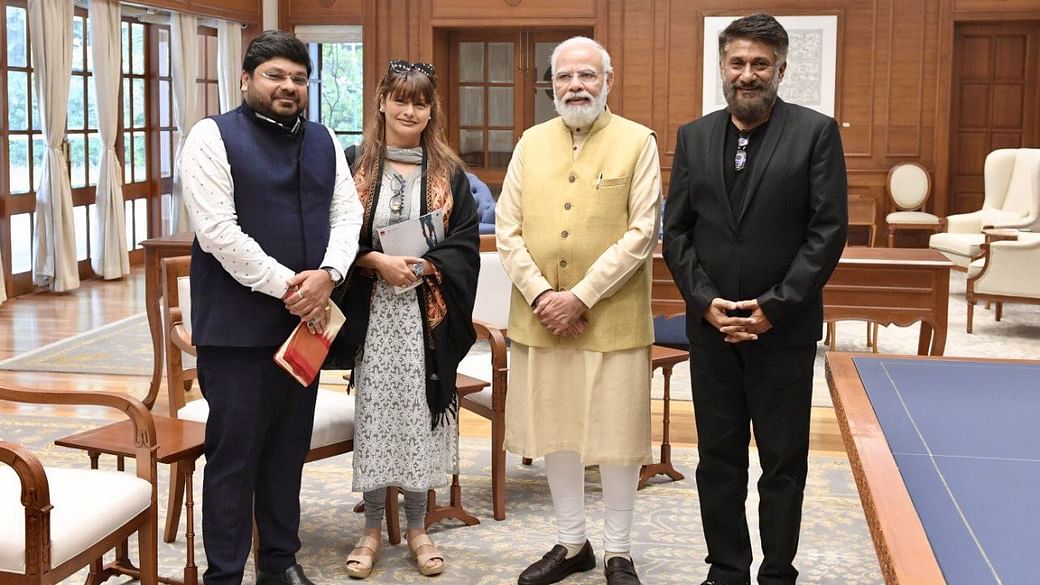 PM Narendra Modi with the crew of The Kashmir Files | Twitter
PM Narendra Modi with the crew of The Kashmir Files | TwitterThe Kashmir Files has given major FOMO to many people who believe the film contains some grand truth that they are missing out on. Many Indian audiences made a pilgrimage to the theatres to open their ‘third eye’ and witness ‘the truth’ in its pure and organic form. Passions and emotions ran high in theatres and there were many videos circulating on social media where audiences were seen delivering long speeches as the end title rolled on the screen. Cinema halls are known to give ‘audiences to the filmmaker’ but this film is unique because it gave ‘audiences to audiences’.
A few days ago, Prime Minister Narendra Modi said, with regards to the film, that the entire ‘ecosystem’ worked to hide the truth, and that “a truth suppressed for so long is coming out.” In a Roger Ebert-ian fashion, he gave ‘two thumbs up’ to the film and recommended the film to his MPs. This is a significant recommendation from the head of the country. This creates more suspense about the ‘truth’ that this film claims to possess.
There is now a growing debate where the Right-wingers are saying that ‘propaganda’ of the Left and the liberals (whom they have nicknamed ‘Urban Naxal’) is ‘busted’ and the ‘truth’ is finally being told through cinema. On the other hand, people from opposing ideologies believe that The Kashmir Files is nothing but State-sponsored propaganda. This itself leads to the question: what is the meaning of propaganda in cinema and can we distinguish between ‘good propaganda’ and ‘bad propaganda’?
To answer this question, we need to turn to the history of cinema.
Montage films of Soviet Cinema
The Russian Revolution of 1917 created a political environment that pushed the role of propaganda in cinema. The word ‘propaganda’ at that time didn’t have the negative connotation it has today.
In fact, propaganda was termed as an ‘essential activity’ to spread awareness among the public and ‘stimulate their revolutionary thoughts’. Many great filmmakers emerged in this era who believed in the power of propaganda and they made films that are considered some of the most important artworks in cinematic history. These were filmmakers who gave many film theories that are still taught across the best film schools in the world. Among them, the most prominent is Soviet director Sergei Eisenstein who gave ‘montage theories’ or editing techniques. Most modern editing techniques currently used in Hollywood and Bollywood owe a lot to Eisenstein and Lev Kuleshov’s theories of editing.
As such, the base of cinematic editing techniques lies in the idea of propaganda. No wonder famous French filmmaker Jean-Luc Godard once remarked: “Cinema is truth 24 times a second, and every cut is a lie.” There is a medium of psychological manipulation through the use of editing that every filmmaker uses to present their ideas or ‘truth’ to the public.
Now comes the classic question of ‘good propaganda’ and ‘bad propaganda.’ How can we define ‘propaganda’ when it is inherent to cinema? Can ‘good propaganda’ be termed as the transmission of ideas that expand the mind of an individual and thus contribute to society and bad propaganda as something that restricts the thinking of an individual and converts him to a hateful person? Beth Bennett and Sean O’Rourke (2006) thus “contrast ‘good’ rhetoric, which they claim appeals to reason, with ‘bad’ propaganda, which they claim appeals to the emotions,” as noted by researcher Michael Russel in his 2009 thesis.
Relationship between propaganda and spectators
Any success of propaganda also tells us the relationship between the propaganda-makers and the target audiences. In order for propaganda films to land successfully, a proper launching ground first needs to be created. The Kashmir Files is a classic film for its time and place — in a hyper-nationalistic era, where the Right-wing machinery is working overtime to seize the ‘means of communication’ (whether it’s news channels, social media, or Internet memes); in today’s time when there is unadulterated hate against JNU (Jawaharlal Nehru University) and intellectuals; in this era when bigotry is on free display even by the heads of the states. This is the perfect time for such a film to arrive — the audiences are already in a trance of misinformation and they just want to go to theatres to stamp their prejudices rather than seeking ‘truths’.
This is the reason why one sees the video of people shouting slogans in theatres and openly making hate speeches against Muslims. This is, in fact, the kind of social-political film where you’ll gain more insight about society if you move your gaze away from the white screen of the cinema hall and observe the audience.
A film professor from my alma mater Film and Television Institute of India (FTII) used to say: “The meaning of the film is already in the mind of the public and as a filmmaker, you just need to tap into that subconscious area.” This is the reason people interpret films based on their own realities and truths that they have constructed. In the case of The Kashmir files, Kashmiri Hindus are rightfully ‘relating’ to the film because this is a rare occasion when the stories of unimaginable, horrific tragedies are presented on celluloid. On the other side, some people are ‘relating’ to the film because it confirms their biases against those they hate. This is the kind of film that doesn’t ‘tell’ but rather ‘sells’ the idea of truth to you.
American writer Susan Sontag once remarked: “If cinephilia is dead, then movies are dead too… No matter how many movies, even very good ones, go on being made. If cinema can be resurrected, it will only be through the birth of a new kind of cine-love.”
The Kashmir Files also got released post-lockdown, where the intimate experience of individual watching shifted once again to collective viewing in cinema halls. Here, the cinema hall itself became a space for a national experiment, where ‘we’, the people, flocked together to experience the moving images. In the cinema hall, Kashmiri Pandits became emotional watching the film and hugged each other as an act of shared trauma, whereas many collective haters shouted angry slogans to show that, as a nation, we are together in shared anger against people who allegedly hid the truth for long.
Cinema as a truth-telling medium
This trend of bringing out the ‘truth’ of any historical event through the cinematic medium is a complicated thing to do. Cinema can only bring out one version of the truth, which itself is deeply marinated in the biases of the person telling the story or people sponsoring the film. In cinema, every frame is political by default because by choosing what’s inside the frame, you are, automatically, hiding what’s outside of it. The very frame that your camera chose tells something about the ‘gaze’ and mind of the person who conceptualised it. This is why rather than the accuracy of events presented in the film, what matters the most is how these events are presented to create a psychological effect. How does the film play with the emotion of pre-radicalised society through the usage of cinematic mediums?
There is also a difference between political cinema and politically motivated cinema. The Kashmir Files is the latter, using propaganda to shut minds off rather than stimulate any useful cinematic or social thoughts.
However, an unexpected, and probably undesired, byproduct happens to be the catharsis for Kashmiri Pandits who feel they have ‘witnessed’ their truth being told, ironically through fiction, for we, as a society, talk more about Kashmiri Pandits than talking to them or humanely understanding their plight.
Thursday, 17 March 2022
Sunday, 20 February 2022
Friday, 18 February 2022
Wednesday, 16 February 2022
Saturday, 12 February 2022
Muslim women must see burqa is just like chastity belt of dark ages, Taslima Nasreen writes
Taslima Nasreen in The Print
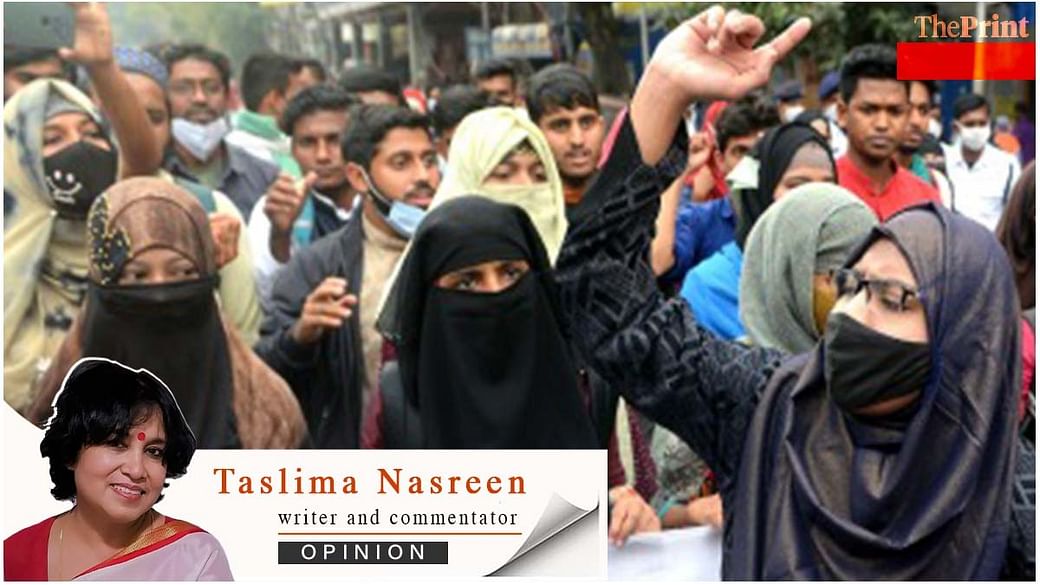
There is practically no difference between a Jewish, Christian, Muslim or Hindu fundamentalist. They are all primarily ‘intolerant’. Standing next to the mortal remains of playback singer Lata Mangeshkar, Muslims have prayed to Allah, Hindus to Bhagwan, and Christians to their almighty God. Seeing Bollywood icon Shah Rukh Khan lifting his hands in prayer and blowing on her body, some Hindu extremists thought that he was spitting. Then social media mayhem descended.
I have noticed that in India, while Muslims are largely aware of Hindu rituals and practices, most Hindus are ignorant about Muslims ones. Similarly in Bangladesh, Hindus understand Muslim rituals more than what Muslims know of Hindus.
To a large extent, intolerance stems from ignorance. As we saw in the Shah Rukh Khan incident, people from all religions stood behind him. In fact, there are enough liberal and rational people in the Hindu community to oppose the extremists.
The row over hijab
An unnecessary controversy over hijab has erupted in another part of the country, Karnataka. After authorities raised objection to female students from wearing hijab to colleges, the protest by Muslim students started. Then, a group of students donning saffron scarves, took to the streets protesting against the burqa. Chief Minister Basavaraj Bommai ordered schools and colleges to remain shut for a few days. But this is not a solution. If the state fears riots, then violence can erupt when schools and colleges reopen. To prevent riots, the mindset needs to change, and hatred and fear for each other need to be washed clean. In this regard, the Karnataka High Court’s interim order makes sense. I believe, uniform civil code and uniform dress code are necessary to stop conflicts. Right to religion is not above the right to education.
The distance between Hindus and Muslims has not been bridged even after 75 years of Partition. Pakistan has separated from India and has turned into a religious state. But India never wanted to become a Pakistan. Or it could have easily turned into a Hindu State 75 years ago. The Indian Constitution upholds secularism, not religion. This country, with a majority Hindu population, is home to the second largest Muslim population in the world. The laws of India give equal rights to people from all religions, castes, languages, creeds, and cultures.
It is perfectly all right for an educational institution in a secular country to mandate secular dress codes for its students. There is nothing wrong in such a message from the school/college authority that states that religion is to be practised within the confines of the home. Educational institutions, meant for fostering knowledge, are not influenced by religion or gender. It is education that can lift people from the abyss of bigotry, baseness, conservativeness and superstitions into a world where the principles of individual freedom, free-thinking, humanism and rationality based on science is valued highly.
In that world, women do not feel pride in their shackles of subjugation but rather break free from them, they do not perceive covering themselves in a burqa as a matter of right but as a symbol of female persecution and cast them away. Burqas, niqabs, hijabs have a singular aim of commodifying women as sex objects. The fact that women need to hide themselves from men who sexually salivate at the sight of women is not an honourable thought for both women and men.
Education is supreme
Twelve years ago, a local newspaper in Karnataka published an article of mine on burqa. Some Muslim fundamentalists vandalised the office and burnt it down. They also burnt down shops and businesses around it. Hindus also hit the streets in protest. Two people died when the police opened fire. A simple burqa can still cause fire to burn in this state. Riots can still break out over burqas.
A burqa and hijab can never be a woman’s choice. They have to be worn only when choices are taken away. Just like political Islam, burqa/hijab is also political today. Members of the family force the woman to wear the burqa/hijab. It is a result of sustained brainwashing from a tender age. Religious apparel like the burqa/hijab can never be a person’s identity, which is created by capabilities and accomplishments. Iran made hijab compulsory for women. Women stood on the streets and threw away their hijabs in protest. The women of Karnataka, who still consider hijab as their identity, need to strive harder to find a more meaningful and respectable identity for themselves.
When a woman’s right to education is violated on the pretext of her wearing a hijab, when someone forces a woman out of hijab as a precondition to education, I stand in favour of education even in hijab. At the same time, when a woman is forced to wear a hijab, I stand in favour of throwing the hijab away. Personally I am against hijab and burqa. I believe it is a patriarchal conspiracy that forces women into wearing burqa. These pieces of clothing are symbols of oppression and insult to women. I hope women soon realise that burqa is not different from the chastity belt of the dark ages that was used to lock in women’s sexual organs. If chastity belts are humiliating, why not burqa?
Some say that the furore over the burqa in Karnataka is not spontaneous and is supported by political forces. This sounds very familiar to saying that riots do not happen, but are manufactured — mostly before elections and almost always between Hindus and Muslims. Apparently they do count for a few votes. I, too, was thrown out of West Bengal for a few votes.
It is heartening that riots do not happen. It would be frightening if they did happen spontaneously. Then we would have surmised that Hindus and Muslims are born enemies and can never live with each other peacefully.
I believe that even the Partition riots didn’t happen on their own but were made to happen.
A new India
I have heard some Hindu fanatics call for India to be turned into a Hindu Rashtra, where non-Hindus will be converted to Hinduism or be forced to leave the country.
I really do not know if such people are big in numbers. I know India as a secular state and love it that way. I have confidence in the country. Is India changing? Will it change? I am aware of the liberality of Hinduism as a religion. One is free to follow or not follow it. Unlike in Islam, Hinduism does not force one to follow its practices. Hinduism doesn’t prescribe people to torture, imprison, behead, hack or hang someone to death for blasphemy. Superstitions still exist in Hinduism, even though a lot has waned with time. But, India will be a country only for Hindus, anyone criticising Hindus or Hindutva will be killed — are statements that are new to me.
I have been critically scrutinising all religions and religious fundamentalism in order to uphold women’s rights and equality for more than three decades now. My writings on Hinduism and religious superstitions suppressing women’s rights have been published in Indian newspapers/magazines and have also been appreciated. But today, as soon as I pose a question like, “Why do men not observe Karva Chauth for the welfare of women?” hundreds of Hindus hurl personal attacks and abuse on me demanding my expulsion from the country. This is a new India. An India that I cannot imagine. I find their behaviour similar to Muslim fundamentalists. Utterly intolerant.
If India was a Hindu Rashtra, will all fundamentalists and liberal Hindus be able to live peacefully? Will there be no discontent among the dominant and oppressed castes, no discrimination between men and women? A state only for Hindus? Perhaps. Just the way Jews have carved a state for themselves, and Muslims have Pakistan.
I will have to leave a Hindu Rashtra too because I cannot become a Hindu. I am an atheist and a humanist, and I choose to stay that way. Gauri Lankesh, I believe, was a humanist. She was not fit for a Hindu Rashtra, nor will I be.
Friday, 11 February 2022
"The Inside Story on The Hijab - School case"
Anusha Ravi Sood in The Print
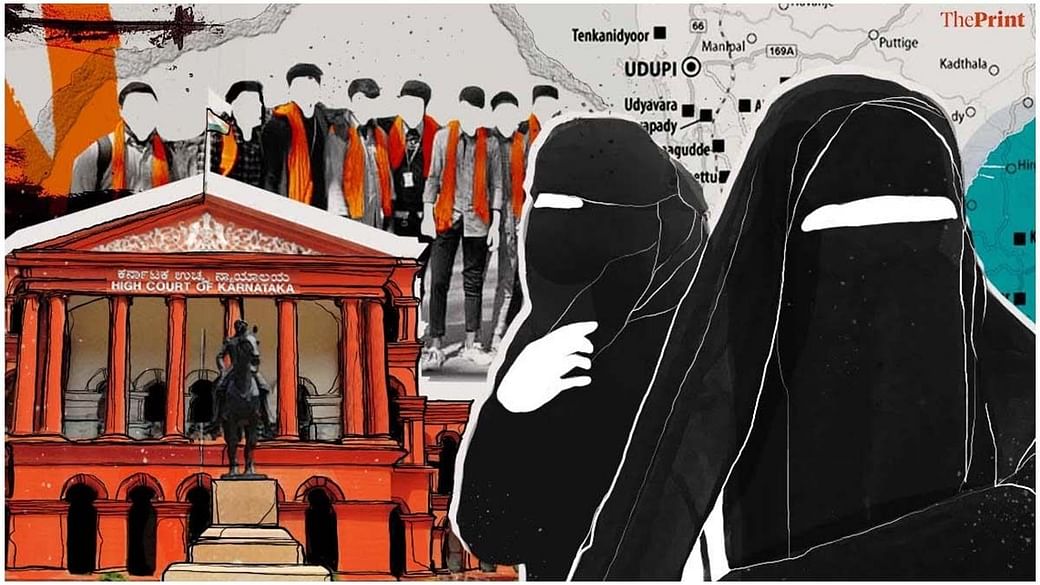
Udupi: Abdul Shukur took a sip of water and bit into a chikki (peanut bar) at 6:30pm Tuesday. It was his first meal after a day-long fast and he had come to offer prayers at the Jamia Masjid in Udupi, Karnataka. Shukur’s daughter, Muskaan Zainab, studies at the city’s Government Pre-University (PU) College and is one of several students who have petitioned the Karnataka High Court for the right to wear the hijab (headscarf) on campus.
“Our entire family fasted today since our petition was being heard in court. I will fast tomorrow too,” 46-year old Shukur, who runs a small business in Malpe, said.
The hijab row has been making headlines since January, but Shukur claimed the issue was triggered in October when viral photos showed Muslim girls at a protest organised by the Akhil Bharatiya Vidyarthi Parishad (ABVP, the RSS-affiliated students’ body).
The images in question were posted on the Facebook page of the Udupi ABVP on 30 October last year. They showed Muslim girls holding the ABVP flag as part of a protest demanding a probe into the alleged rape of a Manipal student. In the communally sensitive coastal belt of Karnataka, the pictures ignited a controversy.
“I was taken aback to see my daughter there… because she isn’t a member of ABVP,” Shukur said. Furthermore, Muskaan was not wearing her usual headscarf in the photo.
“I asked her why she wasn’t wearing a headscarf in the photo, and that is when she told me that the college doesn’t allow hijabs in classrooms,” he said. This came as a shock to Shukur, who decided to confront the college principal.
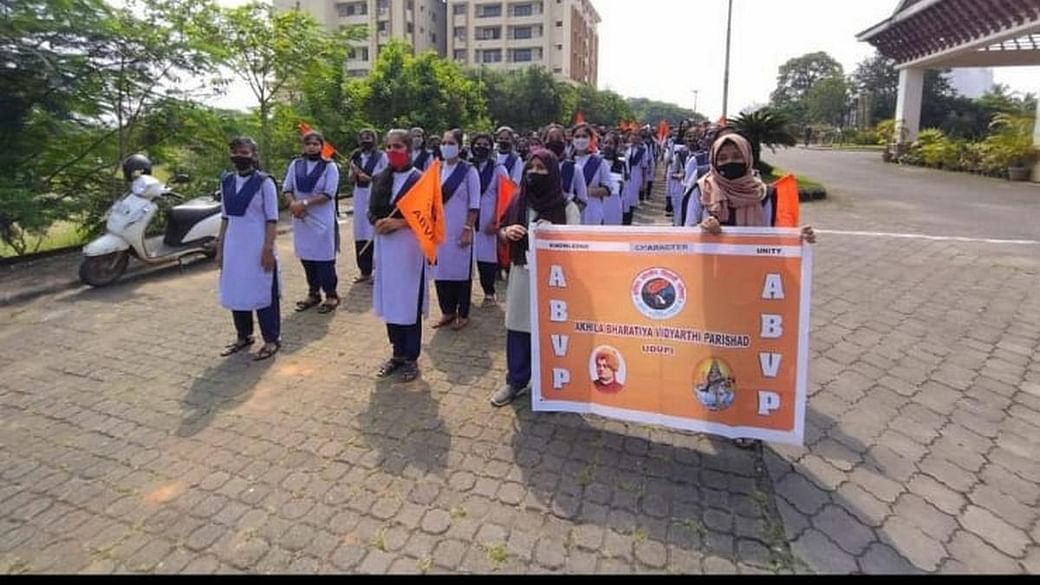
He was not the only one taking notice. According to an intel report submitted by the Udupi police to the state government, the Campus Front of India (CFI), which is the students’ wing of the Islamist outfit Popular Front of India (PFI), had approached parents with the offer to help take on the college management.
A source from the CFI who did not wish to be named told ThePrint that the ABVP protest incident had outraged the organisation. It therefore started encouraging Muslim women to refuse to join ABVP events and to fight for their right to wear hijabs in the classroom. The women’s parents also took these demands to the college.
“When I asked the principal why students were being sent to protest without consent and were not allowed to wear headscarves, he said it was a small issue,” Shukur said.
Rudre Gowda, principal of the college, rejected this allegation. “For years, students have been wearing hijabs to campus, but have been removing them during classes. These girls too were adhering to this, but since December, they started demanding that hijab should be allowed during classes too,” Gowda told ThePrint.
The matter quickly led to a standoff between the families of six Muslim students and the college management. The CFI also alleged that the college had, as retaliation, made details of the girls and their families public.
While there were attempts to negotiate an understanding between the students and the college authorities in Udupi, the row escalated rapidly — partly due to political organisations jumping on to the bandwagon and partly due to the wildfire effect of social media.
In January, the students petitioned the Karnataka High Court, by which time the issue was making headlines and had snowballed into communally charged conflicts in several Karnataka colleges.
Also Read: A timeline of how hijab row took centre stage in Karnataka politics and reached HC
Bruised egos and social media hype

Before the hijab issue reached the headlines, there were weeks of efforts to forge an understanding between the families and the college.
A senior leader of the Udupi District Muslim Okkoota — an umbrella organisation of mosques, jamaats, and Islamic organisations in Udupi — told ThePrint on the condition of anonymity that the body had tried its best to convince the families that it was acceptable to remove the hijab in class.
“We advised the girls to not make a big issue out of not wearing hijab inside classrooms. We even took them and their parents to religious clerics and explained that it was okay to remove hijabs in the classroom,” he said.
However, the students were “adamant”, he said, because they had received backing from the CFI, the campus affiliate of the PFI, an Islamist outfit that was set up in Kerala in 2006 and which the Bharatiya Janata Party (BJP) wants banned because of its allegedly radical tendencies.
“The CFI saw [the hijab conflict] as an opportunity to strengthen its support base,” the Muslim Okkoota leader said. In coastal Karnataka, he explained, the two main students’ bodies are the ABVP and CFI, while the Congress’s campus body, the National Students Union of India (NSUI), does not have a presence in local colleges.
When ThePrint spoke to CFI members in Udupi, they claimed that the organisation got involved only after students of the PU College approached them on 27 December, after their memorandums to the district commissioner and education department officials did not yield results. The students in question also told ThePrint that they were not members of the CFI. However, at least three parents are members of the PFI’s political wing, the Social Democratic Party of India (SDPI).
By the end of December, though, nobody was in the mood for a compromise, according to the Muslim Okkoota leader. He said that the Muslim women’s protest, and the social media traction it got, riled the College Development Committee (CDC), which is empowered by the government to take administrative decisions for public educational institutions.
“In December and January, the students’ protests started getting attention on social media and the press. They were shown standing outside the classroom and making notes since they were not allowed inside. This hurt the egos of the committee members,” he claimed, adding that the senior-most members of this body were members of the BJP and RSS. None of the 21 members in the CDC are from the Muslim community.
The matter had now become a “prestige issue” with the BJP and other Hindutva organisations on one side, and the PFI and its affiliates on the other, the Muslim Okkoota leader said.
BJP vs. PFI
What both Hindutva and Muslim organisations can agree on is that as videos from Udupi went viral, they sparked protests in other districts too. Throughout January and February, Karnataka saw several face-offs in colleges between some students in hijabs and others wielding saffron scarves. Each side holds the other responsible.
BJP leaders maintain that without “instigation” from the PFI, the protests wouldn’t have reached such a magnitude.
“Within two days of the girls’ protest in January outside their classrooms, thousands of social media posts were released. How is that possible without a pre-planned, strategised effort?” V. Sunil Kumar, Minister for Energy and Kannada & Culture, told ThePrint.
“When [Muslim students] started escalating the matter, naturally, students from the Hindu community retaliated — a matter of action and reaction,” Kumar, who is also the MLA from Karkala in Udupi district, added.

Other BJP ministers in the Basavaraj Bommai cabinet have also made similar allegations against the PFI. “Students are being instigated to protest for hijab. The role of the PFI and its student wing CFI will be probed thoroughly,” B.C. Nagesh, Karnataka Minister of Primary & Secondary Education, told reporters Tuesday.
The PFI has denied such allegations and has attempted to distance itself from the row.
“As an organisation, we are working for upliftment of marginalised communities. We are in no way involved in this row. Our student wing (CFI) is only trying to provide moral support to aggrieved students. Communal flareups only benefit the BJP,” Anis Ahmed, national general secretary of the PFI, told ThePrint.
The CFI has acknowledged that it was helping the Muslim women’s agitation in Udupi’s PU College, but denied having any political motives.
“We are a student organisation. We do not have any links with political parties. We are leading the students who are fighting for their rights. Muslim students have been harassed at that institute for years now. This is not a retort that erupted overnight,” Masood Manna, a committee member of CFI Udupi, told ThePrint.
Also Read: The right answer to the wrong hijab question is still a wrong answer
Why the PFI and its affiliates are so controversial
The PFI is the organisational successor of the Kerala-based National Development Front (NDF) and claims to fight for social justice for Muslims, particularly in the southern states of Kerala, Karnataka, and Tamil Nadu.
In 2010, the political wing of the PFI — the Social Democratic Party of India (SDPI) — was registered with the Election Commission. Since then, it has slowly been making inroads in the coastal Karnataka belt. It had one of its biggest triumphs in the December 2021 elections to 58 Urban Local Bodies (ULBs) in Karnataka, when it won six seats.
The CFI, meanwhile, is popular among Muslim students in three districts of coastal Karnataka — Udupi, Dakshin Kannada and Uttar Kannada. The CFI has actively eaten into the popularity of the Congress’s student wing, the NSUI, in the three districts.
However, the PFI has faced allegations of radicalism from the BJP. In April last year, the Union government told the Supreme Court that it was in the process of banning the PFI, claiming that many office-bearers had links with the now banned Student Islamic Movement of India (SIMI). Chargesheets have also been filed against members of PFI over their alleged involvement in various instances of unrest, which the organisation has dismisses as “baseless”.
Notably, some Muslim community leaders also have reservations about the PFI and its branches. The senior Muslim Okkoota leader who was quoted earlier alleged that the hijab protests seemed to be a ploy by the organisation’s political wing to mobilise support.
“All the Muslim girls use the same vocabulary… ‘fundamental rights’, ‘constitutional issue’, ‘hijab is intrinsic to Islam’. While they may have been wearing hijab for years, the words and phrases that are being publicly said are coming from one source,” the Muslim Okkuta leader claimed.
Allegations of “instigation”, however, have also been levelled against Hindutva organisations, which have started a counter-agitation involving saffron shawls and scarves, and an influx into colleges of ‘protesters’ who are not even students.
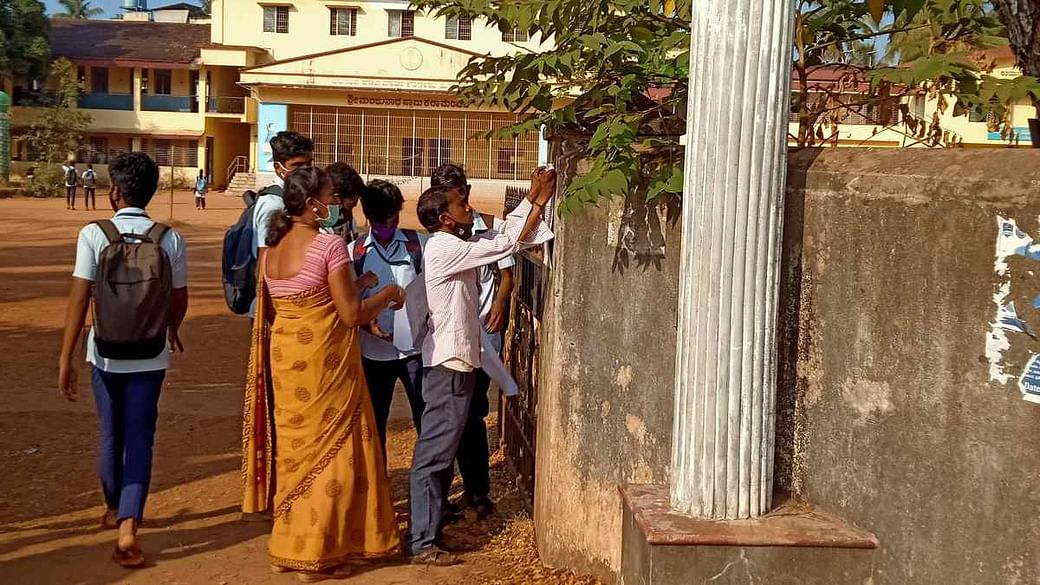
Doubling down on the hijab
“Perhaps one or two Muslim girls used to wear hijab to college but now the number has drastically increased. They are doing this to assert their religious identity,” Halady Srinivas Poojari, MLA for Kundapur, told ThePrint. He isn’t far off the mark, although there are varying interpretations of why exactly the women are doing so.
According to Abdul Aziz Udyavar, organising secretary of the Udupi District Muslim Okkoota, the fight over the right to wear the hijab has inspired other girls from the community to exercise their constitutionally guaranteed freedoms. “Just because I was not exercising my right before doesn’t mean I shouldn’t do it in the future,” Udyavar said.
Principals of at least three colleges in Kundapur told ThePrint that while some Muslim students had always worn the hijab to classes, the number had increased ever since the row took off in January.
“There is no explicit rule that bans hijab in the college, but there is no rule that permits it either,” Naveen Shetty, principal of R.N. Shetty College, said.
According to him, students who sought permission to wear hijabs earlier could usually do so “as long as it doesn’t cause trouble”. Now, Shetty said, it was causing trouble and so hijabs as well as saffron scarves were banned in the college. “The management decided to ban both explicitly until the time the high court order comes,” Shetty added.
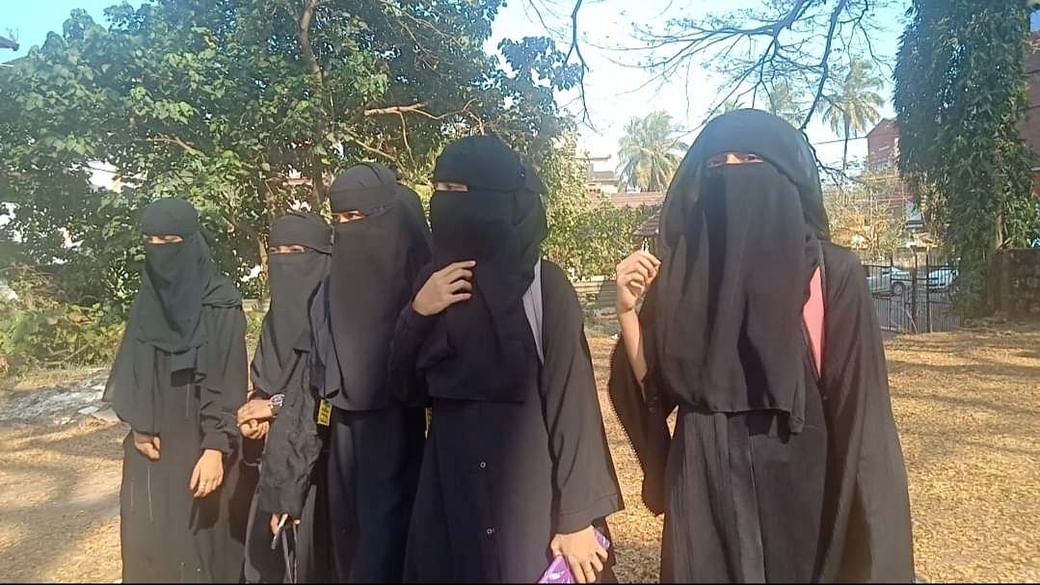
The Udupi PU College students who petitioned the court told ThePrint that they shouldn’t have to choose between their education and wearing a hijab, but said their stance has come at a cost to them.
Abdul Shukur, Muskaan’s father, said he was concerned for the family’s safety. Another student, A.H. Almas, told ThePrint about the hostility that she was encountering.
“When we started protesting, our details were leaked and unknown people follow us around,” she alleged, adding that members of the CFI were giving the women protection.
The Muslim Okkoota had until recently refrained from openly backing the hijab cause but has now reconsidered its decision. “When Muslim girls who are studying at co-ed colleges that have allowed hijab for years started getting targeted, we had to step in since it is injustice being meted out to them,” Ibrahim Sahib Kota, president of the Udupi Muslim Okkoota, said.
‘Senior VHP, Bajrang Dal, Hindu Jagaran Vedike leaders oversee saffron scarf distribution’
When ThePrint visited Mahatma Gandhi Memorial (MGM) College in Udupi, students wearing hijabs were engaged in a face-off with others who had donned saffron scarves and headgear. But, when ThePrint spoke to many of the Hindu protestors, they admitted they were no longer students of the college.
“I studied commerce here and passed out in the 2016-2017 academic year,” Sushanth sheepishly told ThePrint, identifying himself as an ABVP member. “For many years, [Muslim women students] have been wearing hijabs in classrooms but now since they are making a strong assertion of their religious right, should we not as Hindus assert our religious identity too?” he asked, insisting that the protesting Hindu students had all brought their own saffron scarves and shawls.
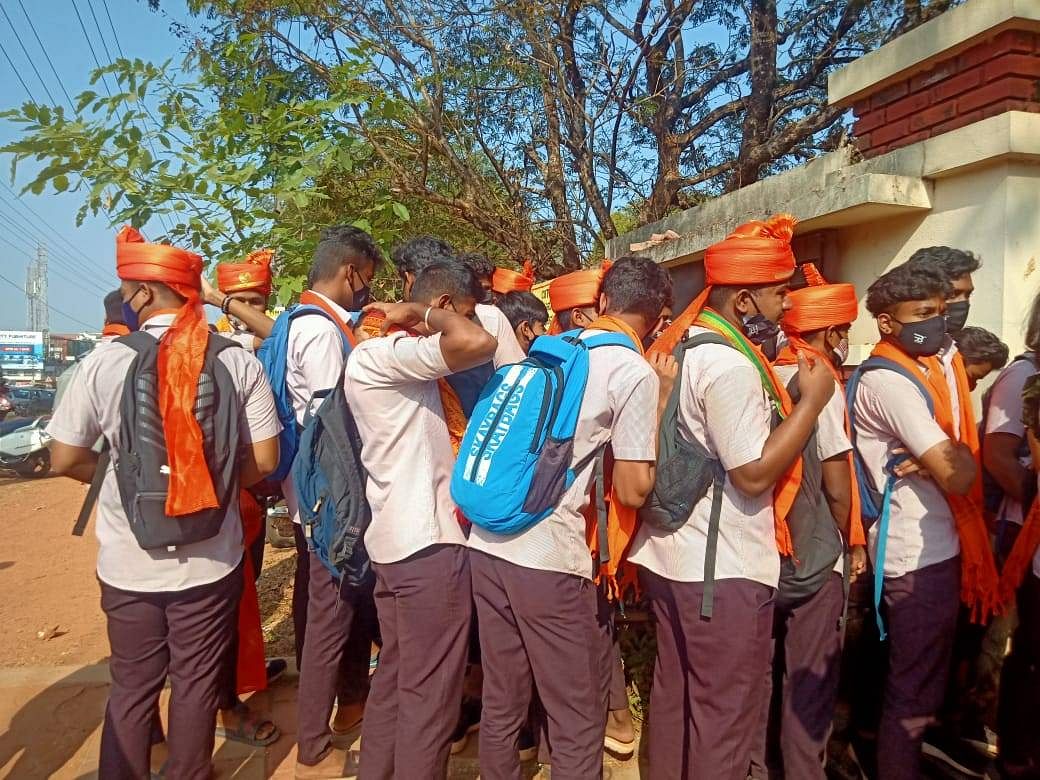
ThePrint, however, witnessed male protestors distributing saffron shawls to women students who had just arrived at the college. The scene was in line with a couple of videos that went viral this month: One showed students returning their saffron headgear to purported members of the Hindu Jagaran Vedike near their college, and another showed someone in an Innova car distributing saffron scarves to students at a college in Kodagu.
Another protestor, Akshat Pai, said he had graduated from the college in 2014, but was there in his capacity as a Hindu Jagaran Vedike leader. “We haven’t pressured the students into protesting. They are doing it on their own,” Akshat Pai said, as students in saffron accessories hovered around him and asked whether they should leave or stay.
A first-year B.Com. student, a Hindu woman, told ThePrint on the condition of anonymity that many of the protestors did not study at the college. “Why are outsiders coming and supplying saffron scarves to our collegemates?” she asked, adding that she had no problem with the hijab just as her Muslim friends had no objection to the bindi on her forehead.
Harshita, another Hindu student at MGM college, had a different viewpoint. She cited a 5 February government order proscribing clothes that “disturb public law and order” and said that if Muslim women could wear hijabs, Hindus could wear saffron scarves.
Prakash Kukkehalli, Mangaluru unit general secretary of the Hindu Jagaran Vedike, was observing the protest at MGM college from the other side of the road, with young men from the campus occasionally arriving to consult with him.
“We are not instigating students. We are only giving them moral support,” Kukkehalli told ThePrint.
According to him, the PFI, SDPI, and other Muslim organisations were provoking students for political benefit. “They have launched social media warfare to dent the image of India,” he said. “Today they will ask for hijab, tomorrow it will be Sharia law… a separate nation.”
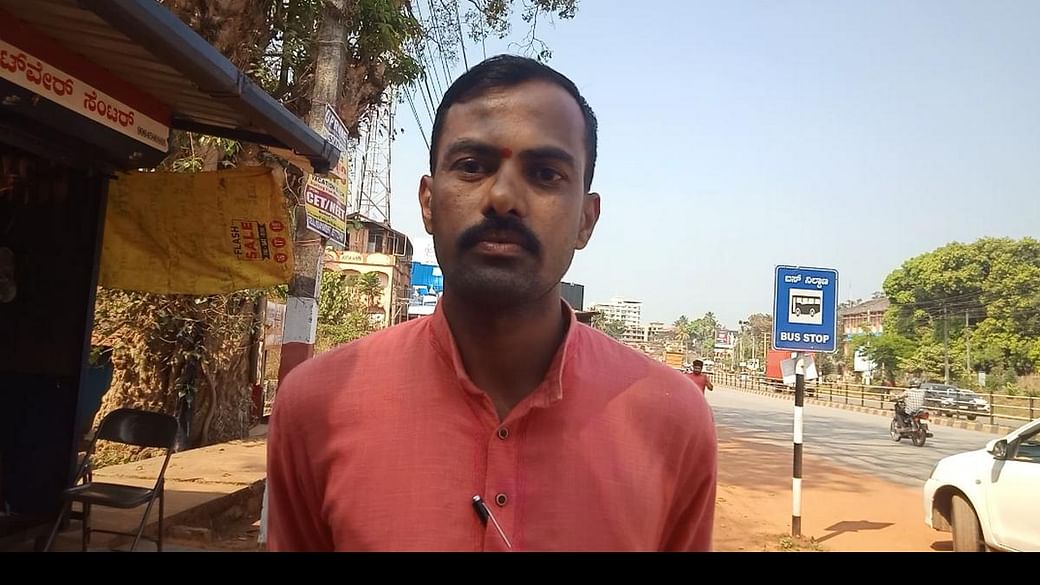
A former ABVP office-bearer, who did not want to be named, told ThePrint how the saffron scarf protest is orchestrated by Hindutva organisations.
“The saffron scarves are procured and distributed by office bearers. Senior leaders of the VHP, Bajrang Dal, Hindu Jagarana Vedike even visit protest sites to observe whom to groom as a leader and if anyone is straying away from discussed slogans or statements,” he said.
This former ABVP leader added that he did not believe in this kind of “communal activism”, whether from Hindus or Muslims, since it only harmed students’ prospects.
“Student activists should be fighting for better colleges, professional courses and employment — not this hijab or saffron scarf fight,” he said.
A deputy superintendent-rank police officer from Udupi told ThePrint that the police were aware of saffron scarves being handed out to students, but that this was not a crime. “Just before students arrive at their colleges, saffron scarves are being handed to them but that is not an offence,” the police officer said.
Over the past few days, though, the protests have taken a more violent turn. The police arrested 15 people in Shivamogga and Bagalkot districts Tuesday. Last week, police in Kundapur, Udupi, arrested two people, Abdul Majeed and Rajab, who were carrying knives near Kundapur Government PU College.
Communally sensitive belt of Karnataka
The three districts of coastal Karnataka — Dakshin Kannada, Uttar Kannada, and Udupi —are often counted among the more communally sensitive regions in India. All three districts have a sizeable population of Muslims as well as Christians.
“There are at least a hundred communal violence incidents in Udupi and Dakshin Kannada alone annually,” Suresh Bhat Bakrabail, an activist of the Karnataka Communal Harmony Forum (which keeps a track of communal violence incidents in coastal Karnataka) told ThePrint. In 2021, in a four-year high, there were more than 120 such incidents in these two districts alone.
Social activists attribute the frequent communal flare-ups in the region, which is frequently described as a “Hindutva laboratory“, largely to incitement from radical Hindu and Muslim organisations.
Friday, 4 February 2022
Saturday, 8 January 2022
Friday, 7 January 2022
Wednesday, 5 January 2022
Thursday, 23 December 2021
Friday, 17 December 2021
Monday, 6 December 2021
Monday, 13 September 2021
Sunday, 5 September 2021
Monday, 9 August 2021
Tuesday, 18 May 2021
Sunday, 16 May 2021
Islamophobia And Secularism
Prime Minister Imran Khan frequently uses the term ‘Islamophobia’ while commenting on the relationship between European governments and their Muslim citizens. Khan has often been accused of lamenting the treatment meted out to Muslims in Europe, but remaining conspicuously silent about cases of religious discrimination in his own country.
Then there is also the case of Khan not uttering a single word about the Chinese government’s apparently atrocious treatment of the Muslim population of China’s Xinjiang province.
Certain laws in European countries are sweepingly described as being ‘Islamophobic’ by Khan. When European governments retaliate by accusing Pakistan of constitutionally encouraging acts of bigotry against non-Muslim groups, the PM bemoans that Europeans do not understand the complexities of Pakistan’s ‘Islamic’ laws.
Yet, despite the PM repeatedly claiming to know the West like no other Pakistani does, he seems to have no clue about the complexities of European secularism.
Take France for instance. French secularism, called ‘Laïcité’ is somewhat different than the secularism of various other European countries and the US. According to the contemporary scholar of Western secularism, Charles Taylor, French secularism is required to play a more aggressive role.
In his book, A Secular Age, Taylor demonstrates that even though the source of Western secularism was common — i.e. the emergence of ‘modernity’ and its political, economic and social manifestations — secularism evolved in Europe and the US in varying degrees and of different types.
Secularism in the US remains largely impersonal towards religion. But in France and in some other European countries, it encourages the state/government to proactively discourage even certain cultural dimensions of faith in the public sphere which, it believes, have the potential of mutating into becoming political expressions.
Nevertheless, to almost all prominent philosophers of Western democracy across the 19th and 20th centuries, the idea of providing freedom to practise religion is inherent in secularism, as long as this freedom is not used for any political purposes.
According to the American sociologist Jacques Berlinerblau in A Call to Arms for Religious Freedom, six types of secularism have evolved. The American researcher Barry Kosmin divides secularism into two categories: ‘soft’ and ‘hard’. Most of Berlinerblau’s types fall in the ‘soft’ category. The hard one is ‘State Sponsored Atheism’ which looks to completely eliminate religion. This type was practised in various former communist countries and is presently exercised in China and North Korea. One can thus place Laïcité between Kosmin’s soft and hard secular types.
The existence of what is called ‘Islamophobia’ in secular Europe and the US has increasingly drawn criticism from various quarters. According to the French author Jean-Loïc Le Quellec, the term is derived from the French word ‘islamophobie’ that was first used in 1910 to describe prejudice against Muslims.
L.P. Sheridan writes in the March 2006 issue of the Journal of Interpersonal Violence that the term did not become widely used till 1991. According to Roland Imhoff and Julia Recker in the Journal of Political Psychology, a wariness had already been building in the West towards Muslims because of the aggressively anti-West ‘Islamic’ Revolution in Iran in 1979, and the violent backlash in some Muslim countries against the publication of the novel Satanic Verses by the British author Salman Rushdie in 1988.
Islamophobia is one of the many expressions of racism towards ‘the other’. Racisms of varying nature have for long been present in Europe and the US. Therefore Imhoff and Recker see Islamophibia as “new wine in an old bottle.” It is a relatively new term, but one that has also been criticised.
Discrimination against race, faith, ethnicity, caste, etc., is present in almost all countries. But its existence gets magnified when it is present in countries that describe themselves as liberal democracies.
Whereas Islamophobia is often understood as a phobia against Islam, there are also those who find this definition problematic. To the term’s most vehement critics, not only has it overshadowed other aspects of racism, of which there are many, it is also mostly used by ‘radical Muslims’ to curb open debate.
In a study, the University of Northampton’s Paul Jackson writes that the term should be replaced with ‘Muslimphobia’ because the racism in this context is aimed at a people and not towards the faith, as such. However, he does add that the faith too should be open for academic debate.
In an essay for the 2016 anthology The Search for Europe, Bichara Khader writes that racism against non-white migrants in Europe intensified in the 1970s because of a severe economic crisis. Khader writes that this racism was not pitched against one’s faith.
According to Khader, whereas this meant that South Asian, Arab, African and Caribbean migrants were treated as an unwanted whole based on the colour of their skin, from the 1980s onwards, the Muslims among these migrants began to prominently assert their distinctiveness. As the presence of veiled women and mosques grew, this is when the ‘migration problem’ began to be seen as a ‘Muslim problem’.
The Muslim diaspora in the West began to increasingly consolidate itself as a separate whole. Mainly through dress, Muslim migrants began to shed the identity of their original countries, creating a sort of universality of Muslimness.
But this also separated them from the non-Muslim migrant communities, who were facing racial discrimination as well. Interestingly, this imagined universality of Muslimness was also exported back to the mother countries of Muslim migrants.
Take the example of how, in Pakistan, some recent textbooks have visually depicted the dress choices of Pakistani women. They are almost exactly how some second and third generation Muslim women in the West imagine a woman should dress like.
But there was criticism within Pakistan of this depiction. The critics maintain that the present government was trying to engineer a cultural type of how women ought to dress in a country where — unlike in some other Muslim countries — veiling is neither mandatory nor banned. This has only further highlighted the fact that identity politics in this context in Pakistan is being influenced by the identity politics being flexed by certain Muslim groups in the West.
Either way, because of the fact that it is a recent phenomenon, identity politics of this nature is not organic as such, and will continue to cause problems for Muslims within and away.